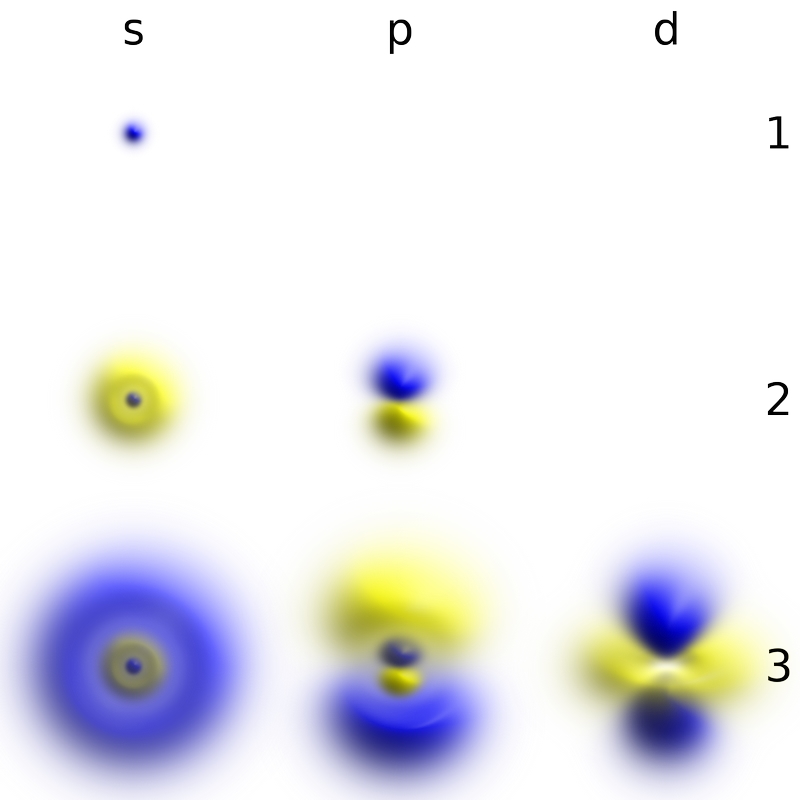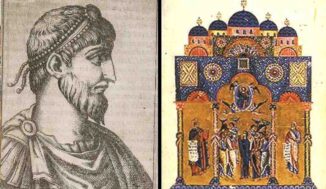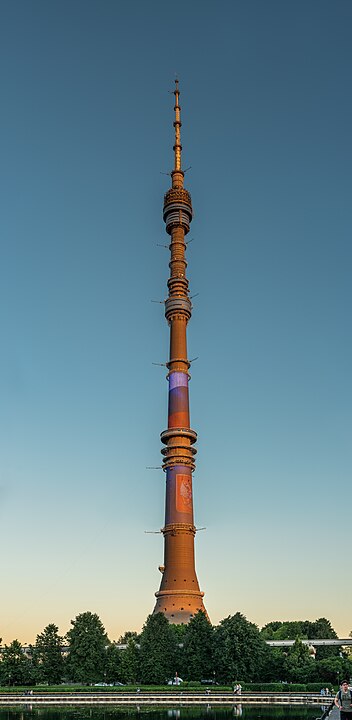127 years ago today, J. J. Thomson announced his discovery of the electron as a subatomic particle, over 1,800 times smaller than a proton (in the atomic nucleus), at a lecture at the Royal Institution in London. It put to rest a long history of experimentation seeking to determine whether or not a “cathode ray” as the electron was first studied, was a ray or a wave. Thomson discovered that, in fact, it was neither. READ more about this groundbreaking discovery… (1897)

The suite of experiments that led Thomson to identify the electron as an elementary particle, and define its mass, were informed by numerous other scientists studying cathode rays, including the German physicist Julius Plücker who observed that the radiation emitted from the cathode caused phosphorescent light to appear on the tube wall near the cathode and that the light could be moved via magnetic field, but also Eugen Goldstein, Sir William Crookes, Arthur Schuster, Hendrick Lorentz, Henri Becquerel, and Earnest Rutherford.
Thomson made good estimates of both the charge and the mass, finding that cathode ray particles, which he called “corpuscles”, had perhaps one one-thousandth of the mass of the least massive ion known which was hydrogen.
He also showed that the charge-to-mass ratio was independent of cathode material, and that the cathode ray was universally negatively charged. He announced his discovery at a lecture and described it as a sub-atomic particle—a building block of atoms, but the name corpuscles never stuck, as other researchers working on the same topic proposed electron.
More Good News from this Day in History:
- The U.S. doubled its size through the Louisiana Purchase paying $15 million, thanks to the vision of Thomas Jefferson (1803)
- The ice cream cone made its debut—originally as warm dough rolled flat, as it came out of the oven still pliable (1904)
- Elvis Presley recorded the Leiber and Stoller song ‘Jailhouse Rock,’ the title song of his third motion picture of the same name and the first song ever to debut at No.1 in Great Britain (1957)
- U.S. hostage Frank Reed was freed after four years in the hands of pro-Iranians (1990)
- U.S. President Bill Clinton became the first President to visit Northern Ireland (1995)
- Ellen DeGeneres joined the US Postal Service to unveil Animal Rescue commemorative postage stamps to bring greater attention to the cause of pet adoption within animal shelters across the U.S. (2010)
31 years ago today, the European Organization for Nuclear Research (CERN) changed the world forever. Tim Berners-Lee, after creating the first-ever website, announced that the “World Wide Web”—created by using their new HTML protocols—would be available for free to everyone. Thousands of websites were created in the days that followed. By 1995, there were really clever tools created to help users better access the breadth of content. They were called Netscape, and Internet Explorer. READ what Berners-Lee thought at the time…

While working in particle physics, he devised a piece of software that could, as he put it, keep “track of all the random associations one comes across in real life and brains are supposed to be so good at remembering but sometimes mine wouldn’t.” He called it Enquire.
In 2007 TIME Magazine wrote how this simple proposition of a technology that worked in a “brain-like way,” became the WWW that we know of today.
“But what if he wanted to add stuff that resided on someone else’s computer? First he would need that person’s permission, and then he would have to do the dreary work of adding the new material to a central database. An even better solution would be to open up his document–and his computer–to everyone and allow them to link their stuff to his. He could limit access to his colleagues at CERN, but why stop there? Open it up to scientists everywhere! Let it span the networks! The thing could grow like the Internet itself, open-ended and infinite.”
Following that epiphany, he cobbled together HTML, the lingua franca of the Internet today. (1993)
1663 years ago today, the Roman emperor Julian the Apostate issued an edict of toleration that legalized and recognized all forms of Christianity, as well as Judaism and Paganism, across his empire. The theosophist, social reformer, notable philosopher, and author in Greek was the last non-Christian ruler of the Roman Empire, and he believed that it was necessary to restore ancient Roman values and traditions in order to save it from dissolution.

With his Tolerance Edict, Julian also decreed the reopening of pagan temples, the restitution of confiscated temple properties, and the return from exile of dissident Christian bishops. (361)

And, 57 years ago today, the Ostankino Tower was completed in Moscow. It was the tallest free-standing tower in the world when construction crews packed up their tools. Standing 540.1 meters (1,772 ft), it was designed by Nikolai Nikitin, Pyotr Gorchakov, and Yuri Kondratyuk. As of 2022, it was still the tallest free-standing structure in Europe. Owned by the Moscow branch of the unitary enterprise Russian TV and Radio Broadcasting Network, it still plays a critical role in telecom and radio communications today. (1967)
Happy 39th birthday to Gal Gadot, the Israeli actress who gained worldwide fame portraying Wonder Woman. After winning the Miss Israel beauty pageant in 2004, she served two years in the Israel Defense Force as a fitness/combat readiness instructor, and began studying law, while pursuing acting.

Gadot’s first big film was Fast & Furious. Her mark in the DC Extended Universe, began with Batman v Superman: Dawn of Justice, followed by the solo film Wonder Woman, and the ensemble Justice League. In 2018, Gadot was included on Time’s annual list of the 100 most influential people, and she was listed among the highest-paid actresses in the world. (1985)
And, 85 years ago today, the New York World‘s Fair opened, featuring The World of Tomorrow — a prophetic vision of the future that included television, air conditioning, refrigerators, dishwashers, clothes washers, and long-distance calling from videophones.

At the height of the Great Depression, a group of New York City businessmen decided to create an international expo to lift the city and the country out of its economic woes. The first fair to be based on the future, 44 million people attended the exhibits with 33 countries participating. Carl Sagan’s own interest in science was sparked by the Fair’s gadgetry. WATCH a 4 min newsreel… (1939)
SHARE The History Gems…




















[…] post Good News in History, April 30 appeared first on Good News […]
[…] post Good News in History, April 30 appeared first on Good News […]
[…] post Good News in History, April 30 appeared first on Good News […]